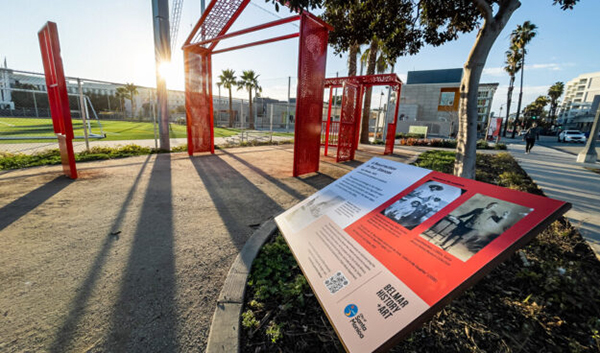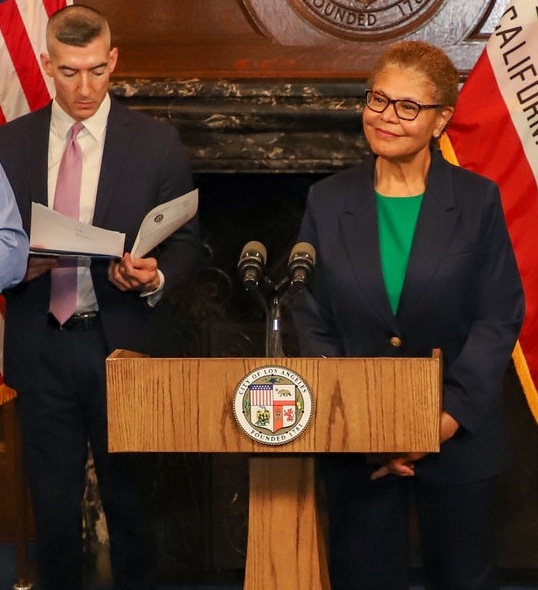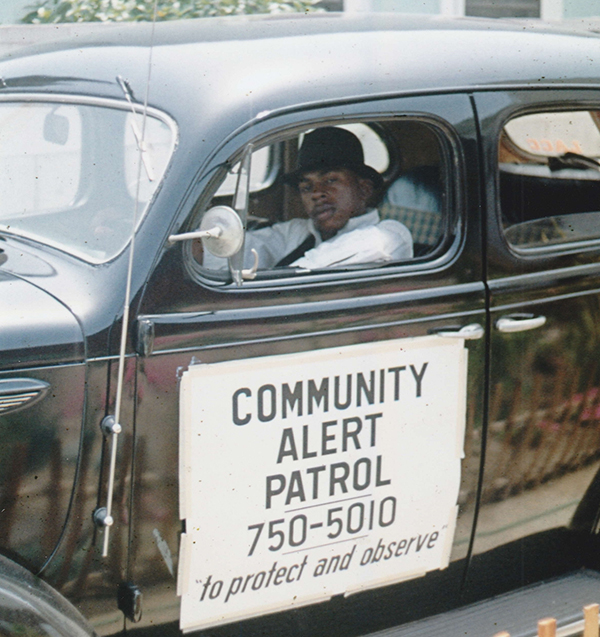By Janice Hayes Kyser
Contributing Writer
SANTA MONICA — A pilot program offering below-market-rate housing to minorities displaced by urban renewal projects of the 1950s and 1960s is a step in the right direction and helps brings the country one step closer to justice, a national reparations expert says.
“It is definitely positive and addresses one of the most egregious inequities — the decimation of Black communities,” said Ron Daniels, convener of the New York-based National African American Reparations Commission. “The people making these decisions [in the past] called it urban renewal, but in our communities, it was known as ‘Negro removal,’ and we are still feeling the consequences today.”
To help remedy such injustices, city officials here are offering below-market rents to Black and brown families that lost their homes — largely through eminent domain — when the Santa Monica (10) Freeway was built through the Pico neighborhood and the city bulldozed another Black area, Belmar Triangle, to build the Santa Monica Civic Auditorium.
“With this pilot, we strive to reach former residents or their descendants who were wrongly displaced from our community and to bring them back to Santa Monica through our affordable housing program,” Mayor Sue Himmelrich said in a statement.
“If you or your family lost your home during this period, we urge you to apply for below-market housing opportunities and to work with us as we look to craft a permanent program.” Officials will accept applications through Feb. 22, or until they receive 100 applications.
Scores of healthy, vibrant minority communities in cities across America were ravaged and destabilized in the 1950s and 1960s — and millions of Black and brown people lost their homes — when whole neighborhoods were razed to make way for civic projects, upscale housing and developments, and high-speed expressways to growing suburban communities.
The Santa Monica program is just a beginning toward remedying some of those past injustices, says City Administrator Natasha Kingscote, who is leading the local initiative.
“There is no one program, including this program, that is going to correct the systemic racism that has taken place in the United States,” Kingscote said. “We are not going to start and end here.
“Our City Council has said they will continue to look at displacement in other areas and [in] the policies we have in place so that we are not unfairly impacting certain segments of our population.”
The pilot program also is one of a growing number of reparations efforts being launched across the nation as municipalities grapple with ways to best repair decades of systemic inequality and provide Black and brown residents with some measure of restitution.
Plans to return Manhattan Beach beachfront property valued at $75 million to descendants of a Black family that had it covertly seized in 1928, and efforts in suburban Chicago to help finance homes for Black residents are just two examples of municipal efforts that are giving the national reparations movement renewed momentum, experts say.
In Los Angeles, Mayor Eric Garcetti announced the formation of a reparations advisory committee last June that would pave the way for reparations pilot programs in the city.
At the state level, Gov. Gavin Newsom signed a landmark bill into law last year that would establish a statewide task force to assess the impact of slavery on African Americans and explore ways the state might provide reparations.
Daniels said such efforts illustrate that California is helping to lead the way toward racial reconciliation in America.
“California is on the forefront, but we are very encouraged by what we are seeing all across the country,” he said. “There is a surge that is coming from the grassroots level and is helping build support for the national reparations movement.”
Los Angeles Urban League President Michael Lawson said he applauds the city of Santa Monica for taking steps to amend for past wrongs — to an extent.
“I applaud [officials] for beginning and chastise them for … taking this long to begin to make amends,” said Lawson, a member of Garcetti’s reparations task force. “This is just a small footnote in the reparations [residents] are due for what was taken away from them without any recompense whatsoever.”
Longtime Santa Monica historian Carolyne Edwards, who grew up in a thriving Black community in Santa Monica in the 1950s, understands Lawson’s sentiments. Still, she gives her hometown an “A” for effort.
“They reached out to us and asked our opinion and seemed sincere,” Edwards, a former Santa Monica schoolteacher, said of city officials. “A lot of places are not even trying. We have to start somewhere.”











